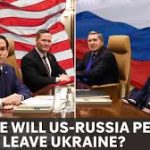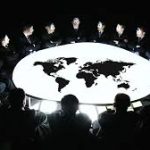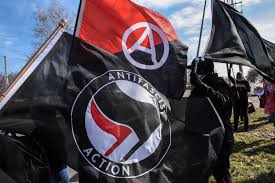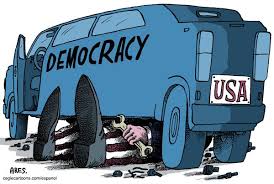Some news hits the timeline like a small spark, and some hits like a full-blown electrical storm. The announcement that US designates European Antifa groups as terrorists definitely felt like the second kind. You could practically hear political circles crackle with the “did you see this?” energy.
And funny enough, I was just making coffee when I saw the headline, and I kind of froze mid-stir. Because this isn’t the kind of story you skim past. It carries weight… and a whole lot of emotional static.
A Big Move with Global Ripples
The State Department’s decision to label four European Antifa organizations as Specially Designated Global Terrorists — and soon, official Foreign Terrorist Organizations — isn’t just another bureaucratic update. It’s a sharp turn in how the US is choosing to confront political violence, especially under President Donald Trump’s broader crackdown narrative.
When the administration had already designated the US version of Antifa as a domestic terrorist group earlier this fall, it felt like a warning shot. This? This is the follow-through.
The groups now labeled include Antifa Ost in Germany, the Informal Anarchist Federation/International Revolutionary Front in Italy, and two Greek outfits with names that sound like they were ripped straight from the pages of a Cold War thriller — Armed Proletarian Justice and Revolutionary Class Self-Defense.
Freezing Assets, Closing Borders, Raising Stakes
Here’s the part that really landed with me: terrorism designations don’t just make headlines. They change lives. They freeze bank assets, block travel, criminalize financial support, and essentially turn an organization radioactive overnight. Suddenly, anyone associated with them is legally in a different universe.
I once overheard a professor (the kind who wore the same corduroy jacket every day) say, “Labels are power.” And this? This is the kind of label that can reshape entire political debates.
Europe’s Violent Undercurrents
The State Department fact sheet spelled out why the designation happened: attacks in Germany, Budapest, Italy, Greece. We’re talking assaults, improvised explosive devices, threats against political and economic institutions — the kind of stuff people don’t always want to discuss openly at dinner tables, but everyone knows is out there.
Hungary had already declared Antifa Ost a terrorist organization. The US move just internationalizes that stance in a way that feels… well, historic.
Trump’s Stance: No Shades of Gray
Trump has made no secret of how he views Antifa. To him, it’s not a loose coalition of activists; it’s a “militarist, anarchist enterprise” intent on toppling governments. Whether you agree with that or not, it’s undeniable that the administration is acting with full force. Investigate. Disrupt. Dismantle. Those were his instructions.
The whole thing makes me think of 2020 again — the chaos, the protests, the masked clashes in the streets. It’s like the narrative that started back then is now entering its next, more global chapter.
But What Happens Now?
That’s the part no one can answer cleanly. Terrorism labels don’t exist in a vacuum. They change diplomatic relationships, law enforcement priorities, activist strategies, public perception — all of it. And with Antifa’s decentralized structure, the question becomes: what does a crackdown look like when there’s no single leader, office, or membership card?
It’s messy. Honestly, everything about this issue is messy. But maybe that’s why people keep reading about it — because it forces us to peek into the parts of politics that aren’t neat or comfortable.
And let’s be real: that’s where the real story always is.
Help keep this independent voice alive and uncensored.
Buy us a coffee here -> Just Click on ME










